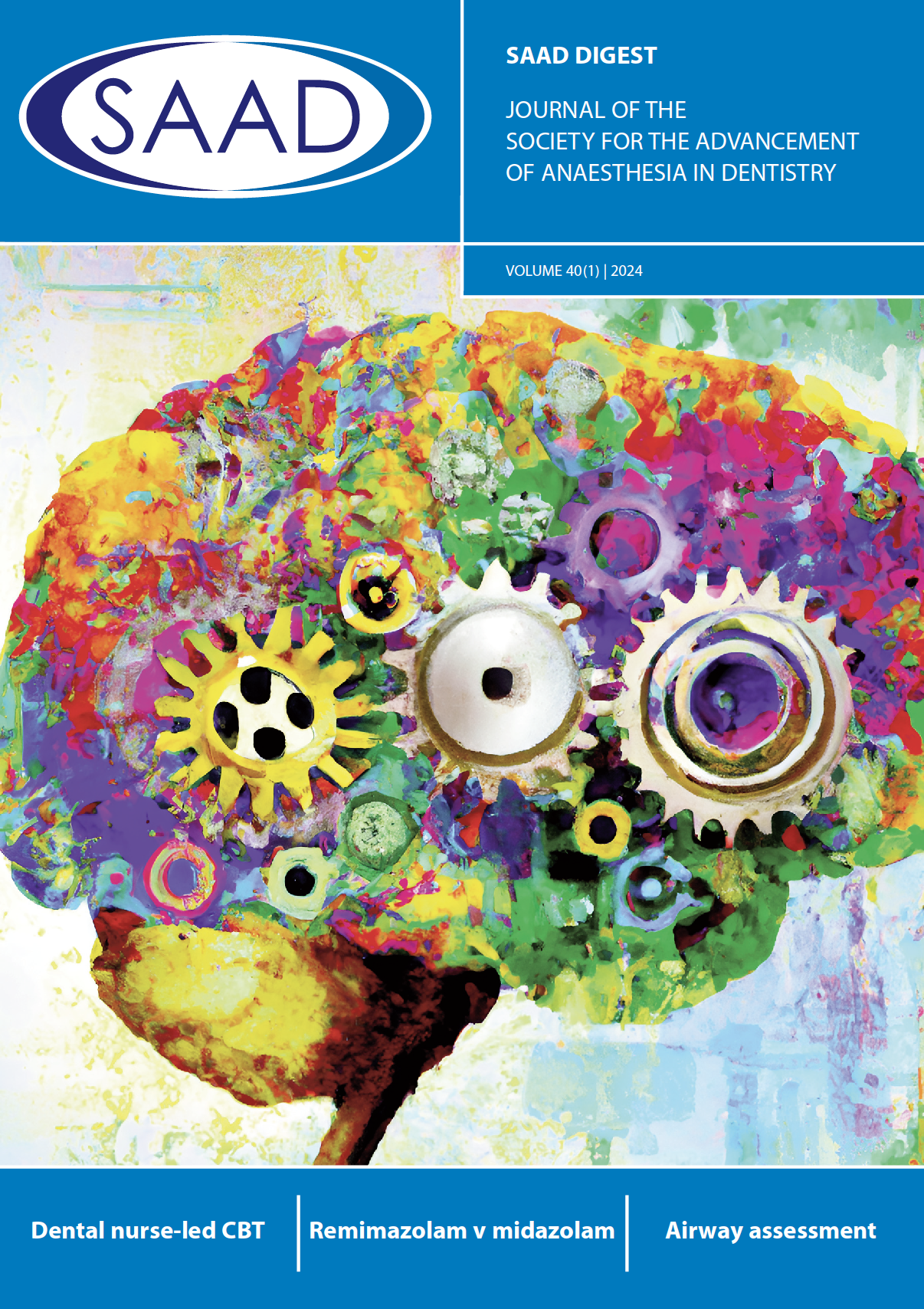
SAAD Digest 40(1) DOI R1 Remimazolam compared to midazolam for dental sedation: an umbrella review

SAAD Digest
March 2024
Volume: 40
Issue: 1
Title: Remimazolam compared to midazolam for dental sedation: an umbrella review
Author(s): G. Shaw, K. Taylor
Abstract:
Remimazolam is a newly approved benzodiazepine drug used for intravenous sedation. Its efficacy and safety compared to the standard sedative drug, midazolam, have not been studied extensively, particularly in the dental setting. This study aims to compare the outcomes of remimazolam and midazolam for single-drug intravenous sedation and to discuss its potential use in dentistry.
A search was conducted across six electronic databases for systematic reviews comparing the efficacy and safety of remimazolam and midazolam. Five systematic reviews were included from a total of 542 studies. The findings indicated that remimazolam may offer significant advantages over midazolam, including faster onset, higher procedure success rates, reduced need for rescue sedatives, shorter recovery time, improved cognitive recovery, and fewer instances of hypoxia. However, there were no significant findings regarding procedure completion or required sedation dosage.
Overall, the evidence suggests that remimazolam has statistically significant benefits over midazolam for intravenous sedation. However, more clinical trials are needed to determine its suitability and clinical significance in dental practice. Further research is required to fully understand the potential advantages of remimazolam in the dental setting.
If you have a query relating to this article please email: digest@saad.org.uk
Articles from Digest 40(1)